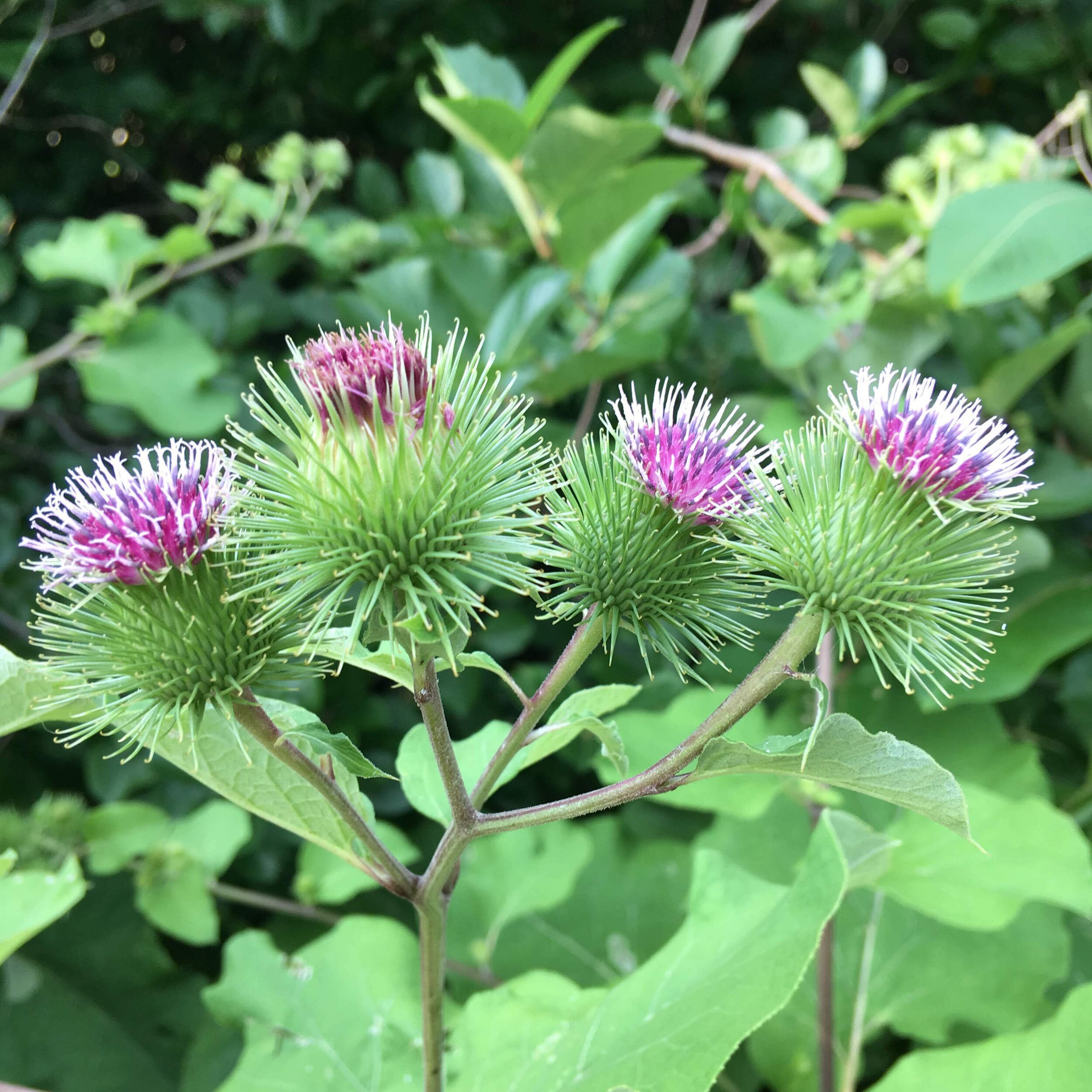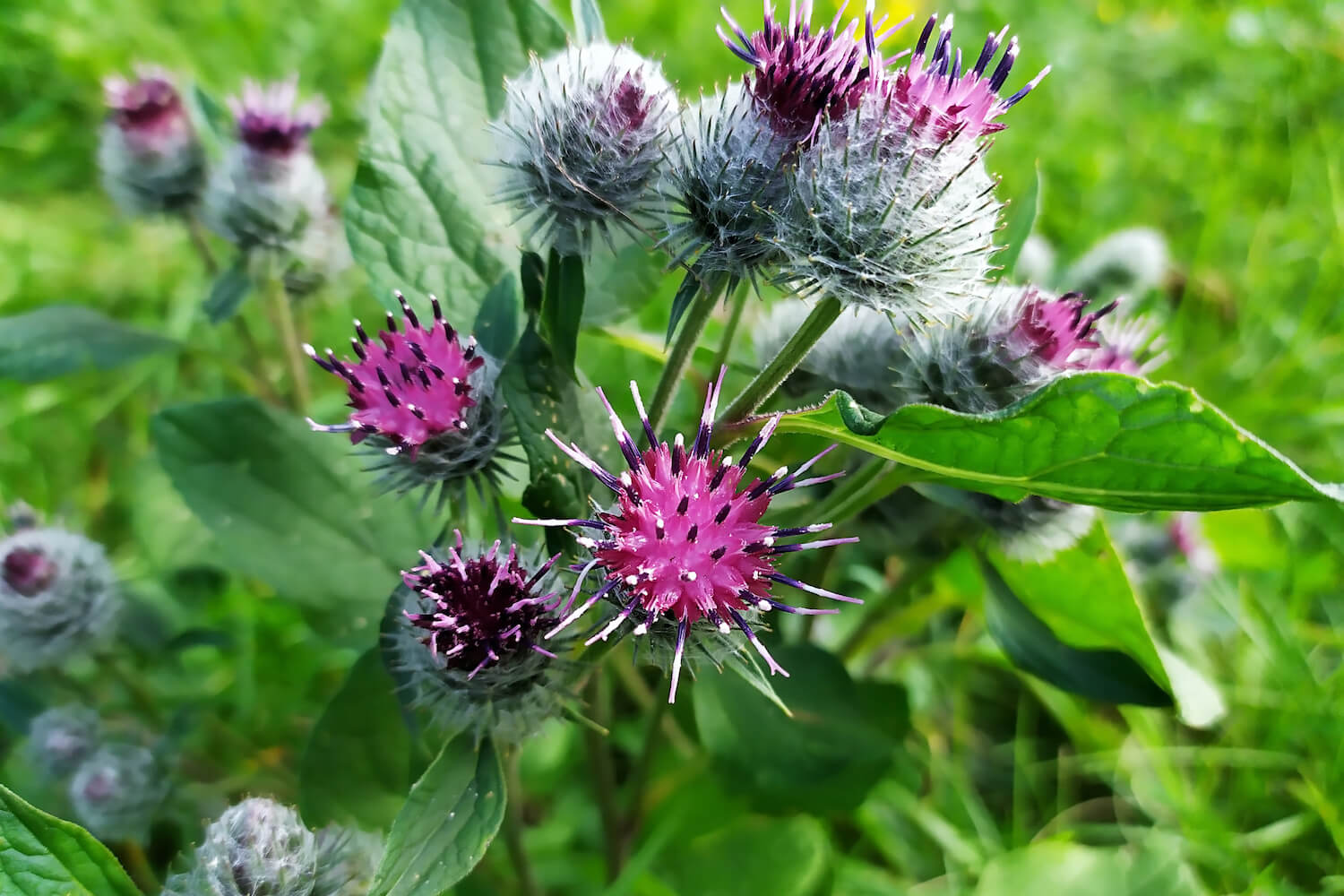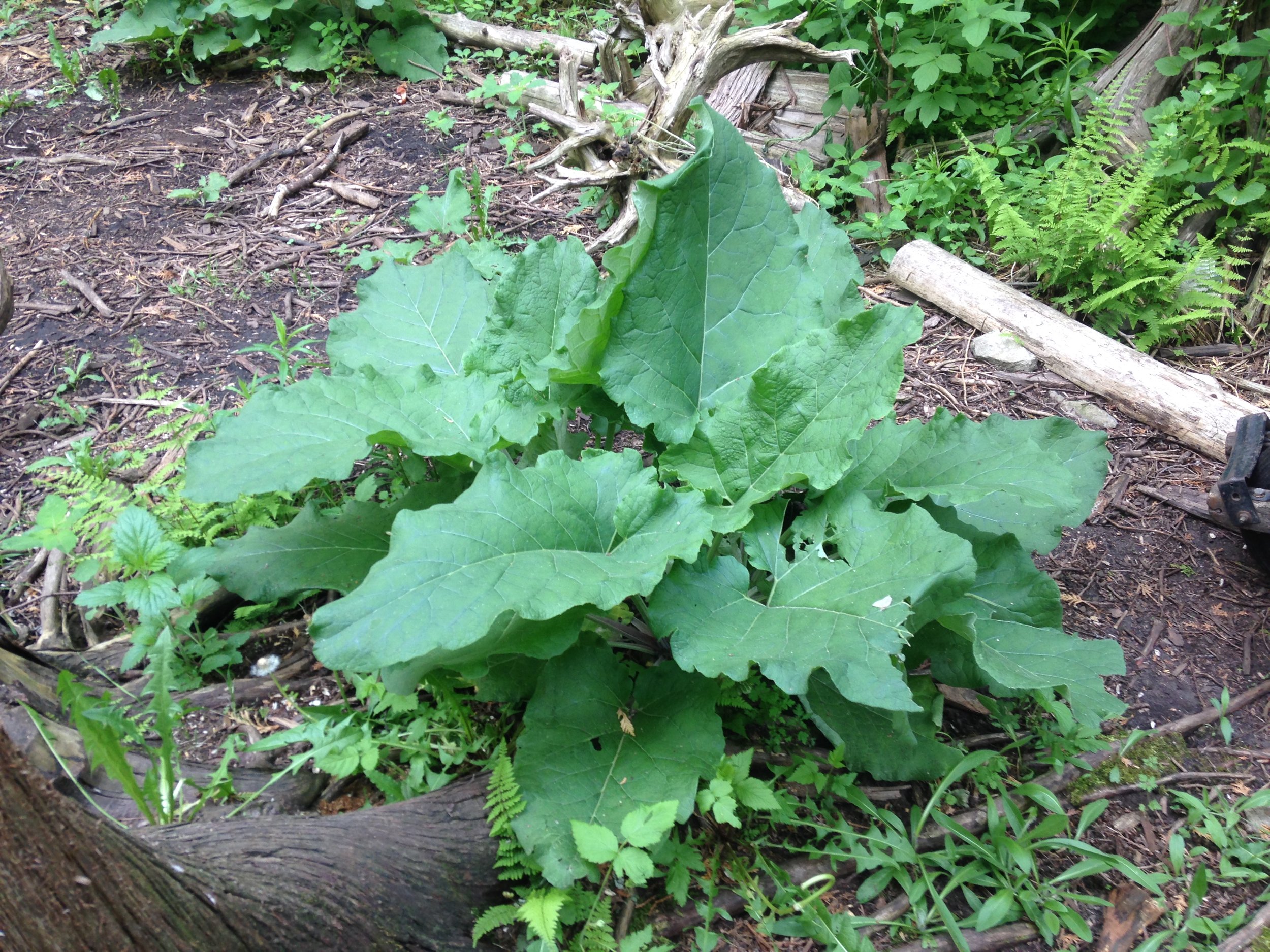The burdock plant, a member of the Asteraceae family, is a biennial plant known for its large, heart-shaped leaves and distinctive burrs. Native to Europe and Asia, it has naturalized in many parts of the world, including North America. While often considered a pesky weed, burdock has a long history of use in traditional medicine and cuisine.

Appearance: Burdock plants can grow quite tall, reaching heights of up to 6 feet. The leaves are large, coarse, and heart-shaped, with a woolly underside. In the second year of growth, the plant produces tall, branched stems topped with clusters of purple or pink flowers. These flowers eventually develop into the characteristic burrs, which cling to clothing and animal fur.
Burdock has been used for centuries in traditional medicine systems, including Traditional Chinese Medicine and Ayurveda. It was valued for its purported ability to cleanse the blood, stimulate the lymphatic system, and promote skin health. The roots were often used to make teas and decoctions, while the leaves were applied topically to treat skin conditions.
In Japan, burdock, known as “gobo,” is a popular vegetable. The roots are harvested and eaten raw, cooked, or pickled. They are often used in stir-fries, soups, and tempura. Burdock is also used in Japanese traditional medicine to treat a variety of ailments, including skin diseases, digestive disorders, and arthritis.

Anti-inflammatory: Burdock root contains compounds with anti-inflammatory properties, which may help reduce inflammation in the body.
Today, burdock is used in various products, including herbal supplements, teas, and skincare products. It is also a popular ingredient in organic and natural cosmetics. However, it is important to note that while burdock has a long history of use, scientific research on its efficacy is limited.

Allergic Reactions: Some people may be allergic to burdock. If you experience any adverse reactions after using burdock products, discontinue use and consult a healthcare professional.
The burdock plant, once considered a mere weed, has proven to be a valuable resource with a rich history of medicinal and culinary uses. While more research is needed to fully understand its potential benefits, burdock continues to be a popular ingredient in traditional and modern remedies. If you are considering using burdock, it is essential to consult with a healthcare professional to ensure its safe and appropriate use.

Burdock Plant
